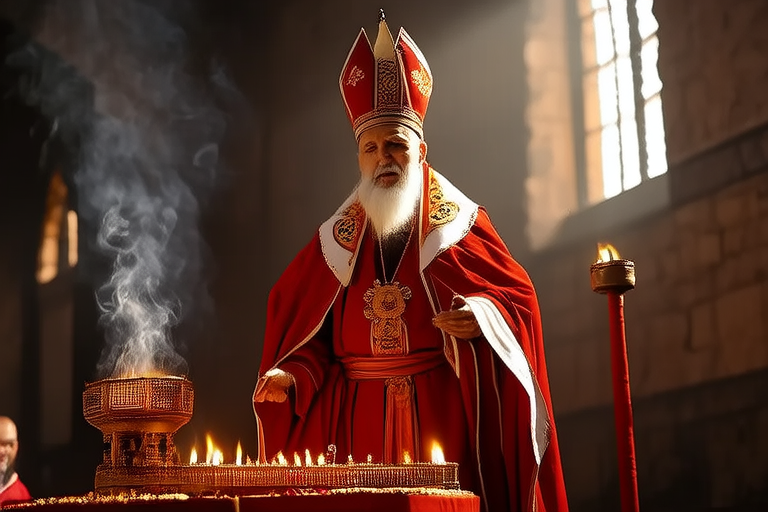From Rituals to Festivals: A Deep Dive into Global Customs

From Rituals to Festivals: A Deep Dive into Global Customs
Rituals and festivals are the lifeblood of cultural identity, acting as bridges between the past and present. These customs, deeply embedded in societies worldwide, serve as expressions of shared values, beliefs, and histories. From solemn ceremonies steeped in tradition to vibrant celebrations that ignite communities, rituals and festivals encapsulate the essence of human connection. This article delves into their historical roots, symbolic meanings, and roles in fostering unity across diverse cultures, with examples spanning Asia, Africa, Europe, and the Americas.
The Historical Roots of Rituals and Festivals
Rituals and festivals have existed since the dawn of civilization, often tied to survival, spirituality, or communal harmony. In ancient agrarian societies, seasonal changes dictated the rhythm of life, leading to the creation of harvest festivals. For instance, the Mid-Autumn Festival in China, celebrated for over 3,000 years, originated as a time to give thanks for bountiful crops and honor the moon’s cyclical influence on agriculture. Similarly, the Pongal festival in South India marks the end of the winter solstice and the beginning of the sun’s northward journey, symbolizing renewal and gratitude.
In Africa, traditional ceremonies like the Yam Festival among the Igbo people highlight the centrality of agriculture in cultural practices. Historically, these events were not merely celebratory but also served practical purposes, such as redistributing resources within communities. Meanwhile, in Europe, pagan rituals celebrating the solstices evolved into Christian holidays like Christmas and Easter, blending ancient traditions with new religious narratives. The Americas, too, boast rich ceremonial legacies, such as the Day of the Dead in Mexico, which traces its origins to pre-Columbian Aztec rituals honoring deceased ancestors.
Symbolism and Meaning in Cultural Practices
At the heart of every ritual and festival lies profound symbolism, often reflecting a culture’s worldview and aspirations. Fire, water, light, and food frequently appear as recurring motifs, each carrying unique connotations. Diwali, the Hindu Festival of Lights celebrated across South Asia, uses lamps and fireworks to signify the triumph of light over darkness and knowledge over ignorance. The act of lighting diyas (oil lamps) is not just decorative but a spiritual gesture inviting prosperity and positivity into homes.
In contrast, Japan’s Obon Festival honors ancestral spirits through lantern-lit processions and dances, symbolizing guidance for souls returning to the earthly realm. Water plays a pivotal role here, as families release floating lanterns into rivers to bid farewell to their ancestors. Similarly, Thailand’s Loy Krathong involves crafting small boats from banana leaves and setting them afloat on waterways, symbolizing the release of negativity and misfortune.
In Africa, masks and costumes hold deep symbolic value during ceremonies. The Dogon people of Mali use elaborate masks in funeral rites to represent ancestral spirits, ensuring safe passage for the deceased into the afterlife. These visual elements transcend mere aesthetics, embodying collective memory and spiritual continuity.
Fostering Community Through Shared Celebrations
One of the most remarkable aspects of rituals and festivals is their ability to unite individuals, transcending differences and reinforcing social bonds. Whether through communal feasts, group dances, or collective prayers, these events create spaces where people can connect on a deeper level. In Brazil, Carnival exemplifies this phenomenon, drawing millions from all walks of life to participate in parades, music, and dance. What began as a Catholic Lenten tradition has transformed into a global spectacle, showcasing Brazil’s multicultural heritage while fostering national pride.
In Native American cultures, powwows serve as vital gatherings that strengthen tribal ties. These events feature drumming, singing, and dancing, offering opportunities for storytelling and intergenerational learning. Participants wear regalia adorned with intricate beadwork and feathers, each piece telling a personal or communal story. Such celebrations are not only about preserving traditions but also about affirming identity in the face of historical challenges.
Even in modern urban settings, festivals continue to play a unifying role. New York City’s Lunar New Year parade attracts diverse crowds who come together to celebrate Chinese, Korean, and Vietnamese traditions. Food stalls, lion dances, and firecrackers transform city streets into vibrant hubs of cross-cultural exchange, demonstrating how ancient customs adapt to contemporary contexts.
Modern Adaptations and Evolving Traditions
While many rituals and festivals remain rooted in tradition, others have undergone significant transformations to align with changing societal values. Technology, globalization, and shifting demographics have introduced new dimensions to age-old practices. For example, Japan’s Hanami, the cherry blossom viewing tradition, now incorporates digital photography and social media sharing, allowing participants to document and disseminate their experiences globally.
In Europe, Christmas markets once exclusive to specific regions have gained international popularity, attracting tourists eager to experience local crafts, foods, and festivities. These markets retain their charm while adapting to modern tastes, offering everything from artisanal goods to eco-friendly decorations. Likewise, Oktoberfest in Germany has expanded beyond its Bavarian roots, inspiring beer festivals worldwide that blend authentic German traditions with local flavors.
In Africa, traditional rites of passage are being reimagined to address contemporary issues. For instance, some communities incorporate education and health awareness programs into initiation ceremonies, ensuring that young people receive guidance relevant to today’s world. This fusion of old and new underscores the resilience and adaptability of cultural practices.
Conclusion
Rituals and festivals are more than mere spectacles; they are living embodiments of history, symbolism, and community spirit. Across continents, these customs reveal universal themes of gratitude, remembrance, and hope, even as they reflect unique cultural identities. By exploring their origins and evolution, we gain insight into humanity’s shared quest for meaning and connection. As global citizens, embracing and respecting these traditions allows us to appreciate the rich tapestry of human experience, reminding us that despite our differences, we are united by our desire to celebrate life together.